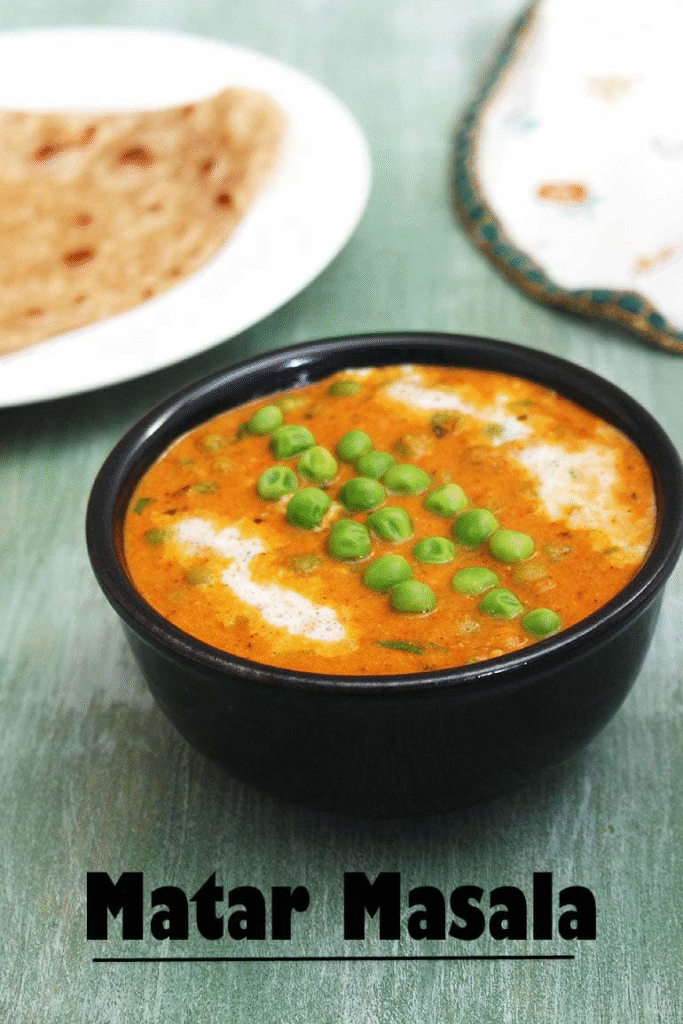Matar Masala Recipe (Green Peas Masala Curry) – A warm, indulgent, and aromatic North Indian delicacy, this matar masala draws inspiration from classic restaurant-style cooking. It masterfully balances the natural sweetness of tender green peas with a luscious, spiced onion-tomato gravy, slow-cooked to perfection. The richness of the curry is enhanced with a creamy touch, making it a soul-satisfying dish that pairs beautifully with naan, roti, or jeera rice.
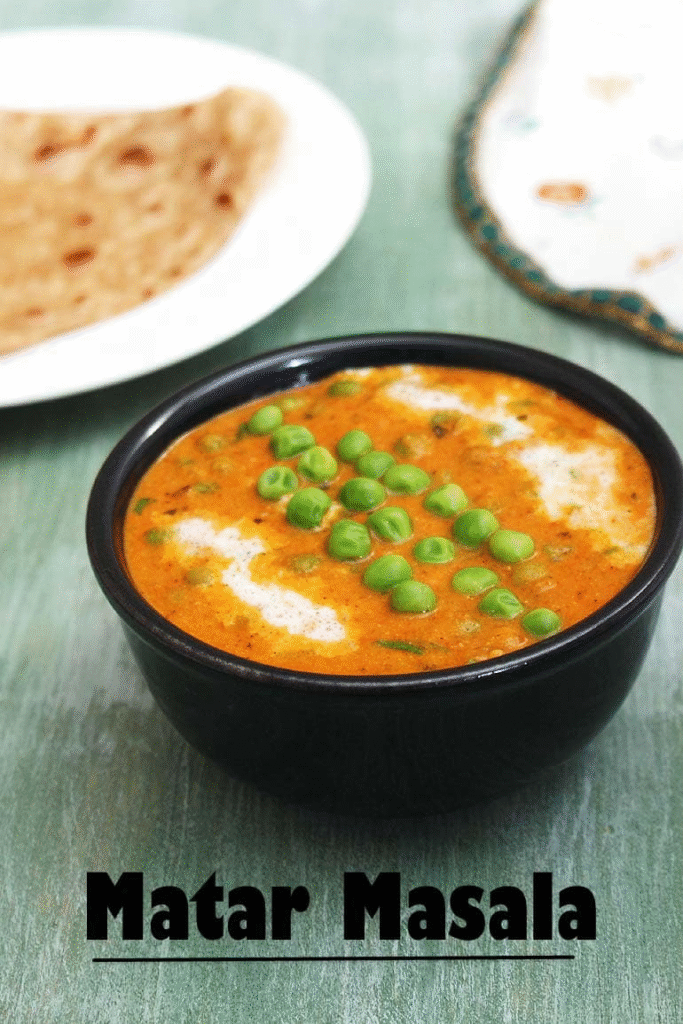
Just like many North Indian gravies served in restaurants, this curry features a luscious base crafted from sautéed onions and tomatoes, enhanced with aromatic spices. What sets it apart is the indulgent touch of blended cashew nuts and a dash of heavy cream, which elevate the dish to a new level of creaminess and richness.
This version of matar masala is a gravy-style preparation, ideal for pairing with naan, roti, paratha, or even jeera rice. While the recipe traditionally calls for fresh green peas, which are typically available during the winter months, I’ve opted for frozen peas in this preparation as fresh ones are hard to come by year-round. Despite using frozen peas, the dish still turns out incredibly delicious and satisfying.
The natural sweetness of green peas contrasts beautifully with the spice-infused curry, creating a delightful harmony of flavors in every bite. This gravy-based green peas curry is different from the dry sabzi version (Matar ki Sabzi) that I’ve shared earlier, making it a great option when you’re in the mood for something a bit more indulgent and saucy.
So, if you manage to get your hands on fresh green peas during the season, do give this matar masala a try. And if not, don’t worry—frozen peas work just as well to deliver that restaurant-style experience right in your own kitchen.
Ingredients
- 2 medium ripe tomatoes, roughly chopped – for a naturally tangy and sweet base.
- 5 to 6 whole cashew nuts – these add a rich creaminess to the gravy when blended with tomatoes.
- ½ inch piece of fresh ginger, instead of chopping, use freshly grated, minced, or ginger paste for smoother texture and stronger flavor.
- 2 cloves of garlic, use finely minced or garlic paste as an alternative to rough chopping for a more integrated flavor in the masala.
- 1½ cups of fresh or frozen green peas – sweet and tender peas add color, texture, and taste to the dish.
- 2 tablespoons of oil – any neutral cooking oil like sunflower or canola oil, or use ghee for a richer taste.
- 1 whole bay leaf – adds a subtle earthy aroma to the tempering.
- 2 cloves (laung) – infuse a warm, slightly spicy undertone.
- 2 green cardamoms (choti elaichi) – lightly crushed to release their sweet fragrance.
- 1 black cardamom (badi elaichi) – imparts a robust smoky flavor that deepens the gravy.
- 1-inch cinnamon stick (dalchini) – provides a sweet and woody flavor, enhancing the dish’s warmth.
- ½ teaspoon cumin seeds (jeera) – used for tempering to add nuttiness and aroma at the beginning.
- ½ cup finely chopped red onion – sautéed until golden to form the base of the curry.
- Salt, as required – adjust according to taste.
- ½ teaspoon turmeric powder (haldi) – for color and its earthy, slightly bitter flavor.
- 1½ teaspoons red chili powder – adjust to your spice preference; use Kashmiri red chili for vibrant color with mild heat.
- 1 teaspoon coriander powder (dhania powder) – adds citrusy and nutty flavor notes.
- 3 tablespoons plain yogurt (curd or dahi) – whisked well; it adds tanginess and richness while balancing spices.
- ¾ cup water – adjust for the desired consistency of the gravy.
- ½ teaspoon garam masala – added at the end for a finishing touch of warmth and depth.
- ½ teaspoon kasoori methi (dried fenugreek leaves) – crushed between palms before adding to release its intense aroma.
- ¼ teaspoon green cardamom powder – for a subtle sweet aromatic hint toward the end of cooking.
- 2 tablespoons heavy cream, fresh cream, or homemade malai – adds silkiness and luxury to the curry.
- 1 tablespoon finely chopped fresh coriander leaves (cilantro) – for garnishing and a burst of freshness.
Step-by-Step Photo Instructions:
1) Begin by placing roughly chopped ginger and garlic into a clean grinder or small food processor jar. Ginger and garlic serve as the foundational flavor builders in countless Indian dishes, infusing the curry with deep, savory undertones.
2) Grind them together into a coarse paste or continue blending until you achieve a smoother consistency, depending on your preference for texture. Once done, transfer the mixture into a small bowl and set aside. If you’re short on time, you may use store-bought ginger garlic paste or opt for freshly grated versions instead—both alternatives work well and save preparation time.
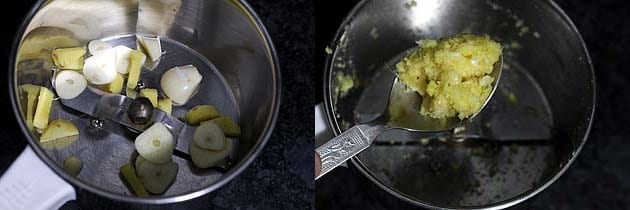
3) Without washing the grinder jar, add the roughly chopped tomatoes along with the cashew nuts. Using the same jar enhances the flavor as it retains some of the ginger-garlic essence.
4) Blend this mixture thoroughly until it turns into a velvety, lump-free puree. The cashews will lend a rich creaminess to the paste, making the base of your curry luxuriously smooth. Once pureed, pour the tomato-cashew blend into a separate bowl and keep it aside until needed in the cooking process.
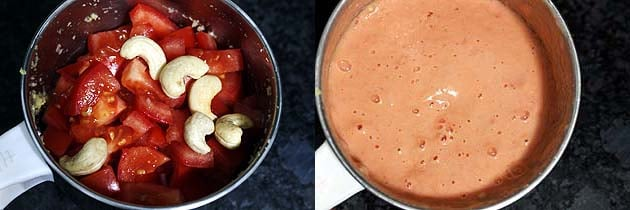
5) On other side, boil the green peas in plenty of salted water till they are soft and tender. Drain the water and keep the boiled peas aside. Alternately you can boil the peas in pressure cooker or microwave. I prefer to cook them in a pan so that they retain its bright green color.
6) Heat the oil in a pan on medium heat. Once hot add whole spices (bay leaf, green cardamoms, black cardamom, cloves and cinnamon stick). Saute for a minute or so and you will have nice aroma of the spices. Then add cumin seeds and let them sizzle.
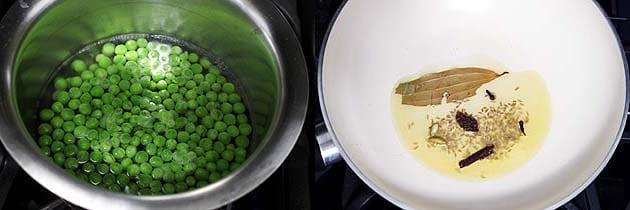
7) Carefully add the finely chopped onions to the hot pan, allowing them to sizzle as they hit the surface and begin to release their natural sweetness. Stir them in well so they are evenly coated with the oil and spices already in the pan.
8) Keep sautéing the onions over medium flame, stirring every now and then to ensure they don’t stick or brown too quickly. Allow them to cook gently until they lose their raw bite and take on a soft, pale pink or glassy appearance—this usually takes about 5 to 7 minutes, depending on your stovetop.
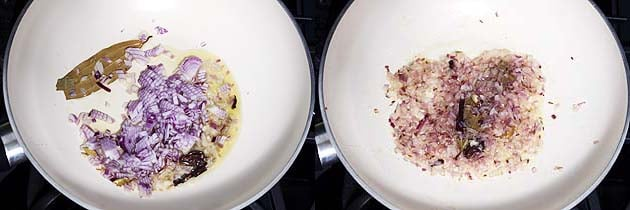
9) Once the onions are properly softened, introduce the freshly prepared ginger-garlic paste into the pan. This paste is crucial for building the depth of flavor in the curry.
10) Stir continuously and sauté the mixture for about a minute or until the raw, pungent aroma of ginger and garlic fades away. You’ll notice the paste starting to blend into the onions and release a rich, appetizing aroma.
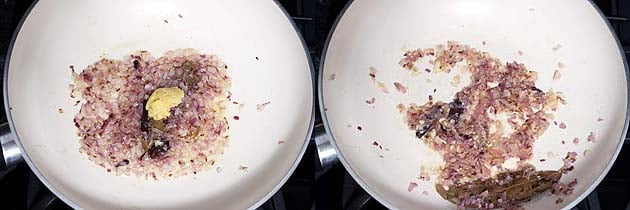
11) At this stage, pour in the smooth cashew-tomato puree that you prepared earlier. Mix it thoroughly with the onion-ginger-garlic base to create a cohesive and flavorful masala. Let it cook for a few minutes so the raw taste of tomatoes disappears and the puree begins to thicken slightly, absorbing the flavors of the aromatics.
12) Give the mixture a good stir, making sure every ingredient is evenly incorporated. Allow it to gently bubble over medium heat, letting the spices and other components infuse into one another, building a rich, layered flavor profile as it simmers slowly.
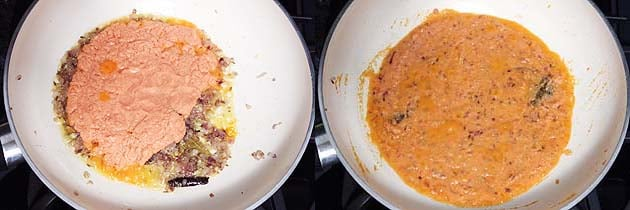
13) Continue to cook the mixture, stirring occasionally to prevent it from sticking to the bottom of the pan or burning. This step is crucial for developing a rich base for the curry.
14) Keep cooking until the moisture starts to evaporate completely. The mixture will gradually thicken and transform into a dense, fragrant paste. This may take several minutes depending on the moisture content of the ingredients and the heat level.

15) Once the paste reaches the desired consistency, sprinkle in the dry spices — add salt to taste, along with a pinch of turmeric powder, red chili powder for heat, and coriander powder for a warm, earthy depth.
16) Mix the spices well into the paste and sauté the mixture for about a minute. This short cooking time helps to release the essential oils from the spices, enhancing their aroma without burning them.
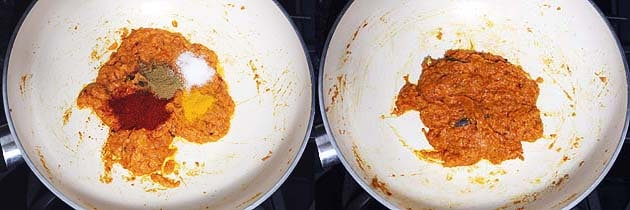
17) Lower the heat to a gentle simmer, then slowly incorporate the whisked yogurt into the mixture in small batches. This gradual addition helps maintain a smooth texture and prevents the yogurt from splitting or curdling in the heat. It’s important that the heat is low at this stage.
18) Stir the yogurt into the mixture immediately and continuously until it’s fully blended, creating a smooth and creamy base. This step adds a subtle tanginess and helps balance the spices.
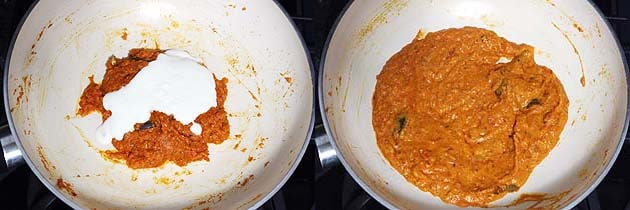
19) Add water to make gravy consistency. Again crank heat to the medium and let it come to simmer. And cook for 5 minutes.
20) Now add garam masala, kasoori methi and green cardamom seeds powder.

21) Mix well.
22) Now add boiled peas.
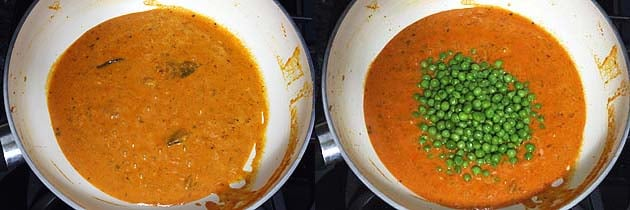
23) Mix and let it come to a simmer.
24) Lastly add heavy cream.
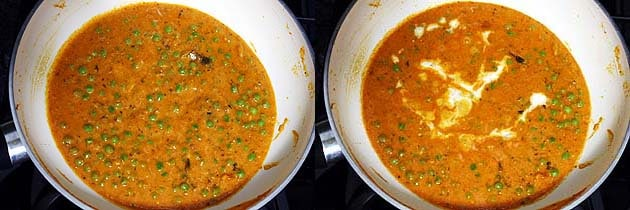
25) and cook for 2 minutes. Turn off the stove.
26) Garnish with chopped coriander leaves and green peas curry is ready to serve.
Matar Masala
Serving suggestion: Serve this matar masala or green peas curry with roti, paratha, naan, kulcha or tandoori roti. It can be served with rice or jeera rice.
